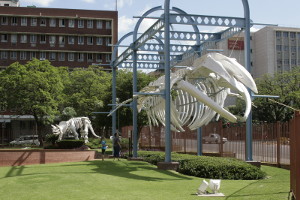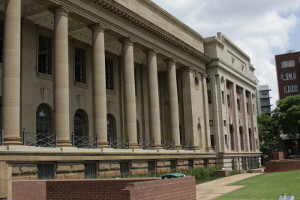The National Museum of Natural History in Pretoria: A Historic Treasure
The city of Pretoria, with its rich tapestry of culture, history, and heritage, boasts one monumental institution that stands as a testament to the evolution of both nature and South African society. The DITSONG: National Museum of Natural History, previously known as the Transvaal Museum, is a beacon of knowledge and a repository of countless specimens that give insight into the natural world of South Africa and beyond.
The inception of the DITSONG: National Museum of Natural History can be traced back to 1st December 1892, when it was established as the Staatsmuseum of the ZAR. This name translates from Afrikaans to the "State Museum" of the South African Republic. The visionaries behind this institution appointed J. W. B. Gunning as its first director, setting the museum on a path of academic excellence and growth.
The initial days of the museum saw it situated in the historic Ou Raadsaal parliament building for its first two years. However, this was a temporary arrangement, and the museum soon found a more permanent location. On 15 December 1904, it was officially opened in a structure located in Boom Street, Pretoria.
By 1912, it became evident that the growing collection and the increasing interest in the museum warranted a relocation. Some of its invaluable items were then moved to its present site on Paul Kruger Street. However, this move came with its own set of challenges. Although plans were laid out to construct the museum building in the shape of an H, the outbreak of the First World War hindered its full realization. As a result, only the center portion of the building was constructed during that period.
The museum's collection continued to expand, and its significance as one of the country's primary natural history repositories grew. This growth necessitated more space. Responding to this need, between 1995 and 1997, expansions were undertaken. The museum saw new wings added to both its northern and southern ends. These additions seamlessly integrated with the original design and provided more room for exhibits and administrative functions.
One of the most remarkable features of this expansion phase was the construction of two steel vaults, known as the Highveld and Lowveld biodomes. These structures further solidified the museum's reputation as a cutting-edge institution dedicated to the study and presentation of South African natural history.
Currently, the DITSONG: National Museum of Natural History stands as the only natural history museum in Gauteng and ranks among the largest in South Africa. It's a testament to the vision of its founders and the dedication of countless professionals who have worked tirelessly to make it the revered institution it is today.
This museum is more than just a building. It's a celebration of nature, history, and the indomitable spirit of the people of South Africa. With each exhibit, visitors are taken on a journey through time, witnessing the wonders of the natural world and understanding the intricate web of life that connects us all.




